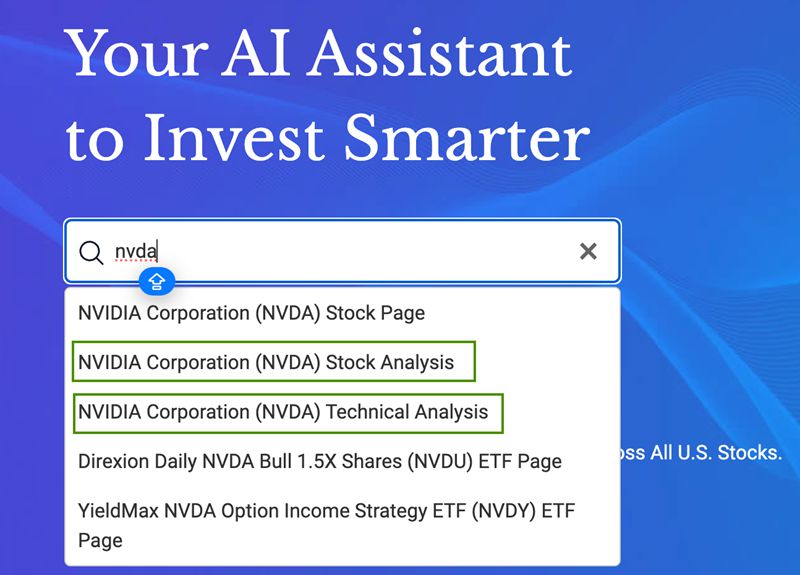20 Top Pieces Of Advice For Deciding On AI Stock Analysing Sites
20 Top Pieces Of Advice For Deciding On AI Stock Analysing Sites
Blog Article
Top 10 Ways To Assess The Market Coverage Provided By Ai-Based Stock Predicting/Analyzing Platforms
Market coverage is an essential factor when evaluating AI trading platforms for stock prediction or analysis which determines the depth and breadth of markets and assets which you have access to. Market coverage is essential because it permits you to diversify your portfolio, learn about global markets, and adapt various trading strategies. Here are 10 tips for evaluating the coverage offered by platforms.
1. Evaluate Supported Asset Classes
Stocks - Ensure you have access to the major stock exchanges such as NYSE and NASDAQ. Also, ensure that your platform offers small-caps and mid-caps.
ETFs. Make sure the platform has a wide selection of ETFs to have a diverse exposure.
Futures and options. Check if the platform is able to handle derivatives, such as futures, options and other instruments leveraged.
Forex and commodities. See whether there are any forex pairings available, as well as precious metals, energy-related commodities, and other agricultural commodities.
Check that the platform works with the major copyright, including Bitcoin and Ethereum, and alternative currencies.
2. Check for Coverage Area
Global markets: Ensure that the platform is inclusive of major global markets such as North America, Europe and Asia-Pacific.
Regional focus: Determine if your platform has a distinct focus on a region or market that matches with your trading needs.
Local exchanges. Find out if the platform allows exchanges that are regional or local for your area.
3. Assessment Real-time vs. delayed data
Real-time data: Ensure the platform has real-time market data for timely decision-making, especially for trading that is active.
Delayed data: Discover if you can get delayed data for no cost, or at a lower cost. This might be enough for investors who are looking to invest long-term.
Data latency. Check to see how your platform can reduce the amount of latency for real-time feeds.
4. Evaluation of Historical Data
In depth of Historical Data The platform has a large amount of historical data that can be used for backtesting, analysis and testing (e.g. 10plus years).
Find out the detail in the historical data.
Corporate actions: Check for evidence that data was recorded prior to. Dividends or stock splits all other corporate actions need to be included.
5. Examine Market Depth and Order Book Information
Level 2 data: Check that the platform has Level 2 information for price discovery and better execution.
Bid-ask spreads: Check if the platform is displaying real-time bid spreads for precise price.
Volume data - Check if the platform contains specific volume data for studying the market's activities and liquidity.
6. Examine the coverage of Indices and Sectors
Major indices: Check that the platform contains important benchmarking indices, index-based strategies, as well as other purposes (e.g. S&P 500, NASDAQ 100, FTSE 100).
Sector-specific data : Determine if your platform is able to provide data specifically for certain industries (e.g. healthcare, technology energy, healthcare) so you can perform targeted analyses.
Custom indices. Find out if the platform permits you to create and track custom indexes based on the criteria you define.
7. Examine the integration of News and Sentiment
News feeds - Ensure the platform has integrated real-time news feeds for news that are market-moving from reliable (e.g. Bloomberg or Reuters) sources.
Sentiment analysis: Check whether the platform has sentiment analysis tools that are based on news media, social media or other data sources.
Event-driven trades: Verify the platform's capabilities to support trading based on events (e.g. announcements on economic data or earnings announcements).
8. Check for Multi-Market Capabilities for Trading
Cross-market trade: Check that the platform permits trading across asset and market categories from a common interface.
Currency conversion: Check if your platform allows multi-currency trading and automated currency conversion.
Support for different time zones: Make sure your platform is able to trade on global markets in different time zones.
9. Review the coverage of different data sources
Alternative data: For more unique insights, confirm if your platform uses other data sources (e.g. satellite imagery, web traffic or credit card transactions).
ESG information: Find out whether the platform offers environmental Governance, Social and Governance (ESG), or other data that can support socially responsible investments.
Macroeconomic Data: Make sure that the platform includes macroeconomic indicators, such as inflation, GDP and interest rates.
Review Market Reputation and User Feedback
User reviews: Read the feedback of users to assess the platform's market coverage, reliability, and usability.
Check the reputation of the platform in relation to its coverage and awards.
Case studies: Seek out reviews or case studies that demonstrate the platform's effectiveness in specific assets or markets.
Bonus Tips
Trial period - Use the free demo or trial to test out the data coverage and market coverage.
API access Check whether the API of the platform supports an analysis that is custom made using market data.
Customer support: Ensure the platform provides support for market-related queries or data issues.
These suggestions will allow you evaluate the market coverage offered by AI trading platforms that forecast or analyze the prices of stocks. So, you'll be able to choose the platform which provides you with the data and markets that you require for successful trading. Market coverage is essential to diversify portfolios, discover new opportunities and adapt to changing market conditions. Take a look at the top get more info for ai trading bots for website recommendations including free ai trading bot, best ai stocks to buy, ai stock trading app, best free copyright trading bot, ai trading platform, ai for investing, ai investing app, trading ai bot, ai stock market, ai trading app and more.
Top 10 Ways To Evaluate The Transparency Of Ai Stock Trading Platforms
Transparency is an important factor when evaluating AI-driven stock prediction platforms and trading platforms. It ensures that users can be confident in the operation of the platform, understand the way in which decisions are made and confirm the accuracy of the predictions. Here are the top ten tips for assessing the authenticity of these platforms:
1. The AI Models are explained in Clear Terms
Tip - Check that the platform provides a thorough description of the AI and algorithm models that are used to forecast the future.
Understanding the underlying technology allows users to assess its reliability.
2. Sources of Disclosure for Data
Tip
What's the reason? Knowing the sources of data ensures that the platform has reliable and comprehensive information.
3. Performance Metrics and Backtesting Results
Tip: Be sure to look for transparent reporting on performance metrics, such as accuracy rates and ROI, as well as backtesting results.
The reason: It allows users to check their past performance as well as the efficacy of their platform.
4. Updates and notifications in real-time
Tips - Make sure to check whether there are real-time updates, notifications, and trades about the platform.
What is the reason? Real-time transparency allows users to be informed of the critical actions.
5. Transparency in Communication regarding Limitations
Tips - Make sure to check whether the platform is transparent about the risk associated with its trading and prediction strategies.
Why: Acknowledging your limitations will help build trust with the users and assist them in making informed choices.
6. Raw Data is accessible to users
Tip : Determine if you have access to raw data as well as intermediate results that are used by AI models.
How do they do it? Users are able to conduct their own analyses and validate predictions by accessing the data in its raw form.
7. Transparency on Fees and Charges
Make sure the platform clearly outlines the subscription fees as well as other hidden costs.
Transparent Pricing: It builds trust by preventing the unexpected cost of.
8. Regular Reporting and Audits
Find out if the platform produces regular reports and is subject to third-party audits to verify the performance of its operation.
Independent verification is essential because it adds credibility to the process and assures accountability.
9. The logical explanation of predictions
Tip Check to determine whether there is an description of how the platform can make specific predictions and suggestions (e.g. feature priority, decision trees).
Explainability can help users comprehend the rationale of AI-driven decisions.
10. Customer feedback and support channels
Tip: Evaluate whether the platform offers open channels for feedback from users and support, and whether it is able to respond in a transparent manner to complaints from users.
What is Responsive Communication? It demonstrates an interest in transparency and the satisfaction of users.
Bonus Tip - Regulatory Compliance
Check that the platform meets all financial regulations. It should also disclose the status of its compliance. This adds an additional level of transparency.
Through analyzing these functions, you can determine if the AI trading platform and stock prediction are transparent. Then, you will be able to make informed choices and be confident in the capabilities of AI. Read the top ai coin price prediction advice for blog examples including chart ai trading, stock ai, trader ai intal, using ai to trade stocks, ai stock prediction, ai investing, best ai trading app, ai copyright trading, stock predictor, copyright ai bot and more.